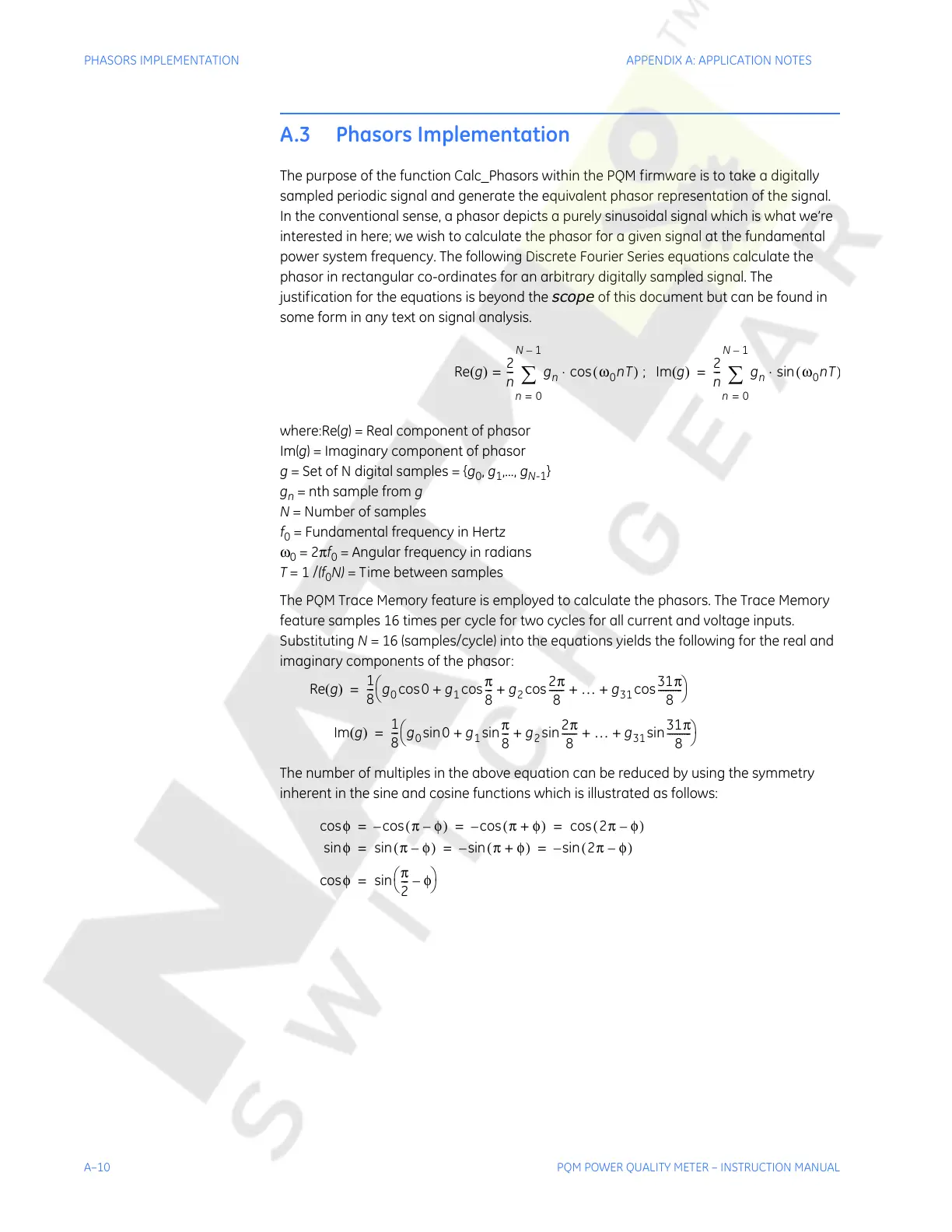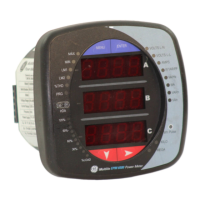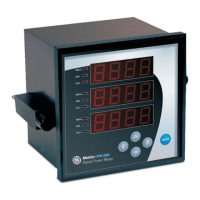A–10 PQM POWER QUALITY METER – INSTRUCTION MANUAL
PHASORS IMPLEMENTATION APPENDIX A: APPLICATION NOTES
A.3 Phasors Implementation
The purpose of the function Calc_Phasors within the PQM firmware is to take a digitally
sampled periodic signal and generate the equivalent phasor representation of the signal.
In the conventional sense, a phasor depicts a purely sinusoidal signal which is what we’re
interested in here; we wish to calculate the phasor for a given signal at the fundamental
power system frequency. The following Discrete Fourier Series equations calculate the
phasor in rectangular co-ordinates for an arbitrary digitally sampled signal. The
justification for the equations is beyond the scope of this document but can be found in
some form in any text on signal analysis.
where:Re(g) = Real component of phasor
Im(g) = Imaginary component of phasor
g = Set of N digital samples = {g
0
, g
1
,..., g
N-1
}
g
n
= nth sample from g
N = Number of samples
f
0
= Fundamental frequency in Hertz
ω
0
= 2πf
0
= Angular frequency in radians
T = 1 /(f
0
N) = Time between samples
The PQM Trace Memory feature is employed to calculate the phasors. The Trace Memory
feature samples 16 times per cycle for two cycles for all current and voltage inputs.
Substituting N = 16 (samples/cycle) into the equations yields the following for the real and
imaginary components of the phasor:
The number of multiples in the above equation can be reduced by using the symmetry
inherent in the sine and cosine functions which is illustrated as follows:
Re g()
2
n
-- -
g
n
ω
0
nT()cos⋅
n 0=
N 1–
∑
= ; Im g()
2
n
---
g
n
ω
0
nT(
sin⋅
n 0=
N 1–
∑
=
Re g()
1
8
-- -
g
0
0cos g
1
π
8
---
cos g
2
2π
8
------
cos … g
31
31π
8
--------- -
cos++ ++
⎝⎠
⎛⎞
=
Im g()
1
8
---
g
0
0sin g
1
π
8
---
sin g
2
2π
8
------
sin … g
31
31π
8
--------- -
sin++ ++
⎝⎠
⎛⎞
=
φcos πφ–()cos– πφ+()cos– 2πφ–()cos===
φsin πφ–()sin πφ+()sin– 2πφ–()sin–== =
φcos
π
2
--- φ–
⎝⎠
⎛⎞
sin=
Courtesy of NationalSwitchgear.com

